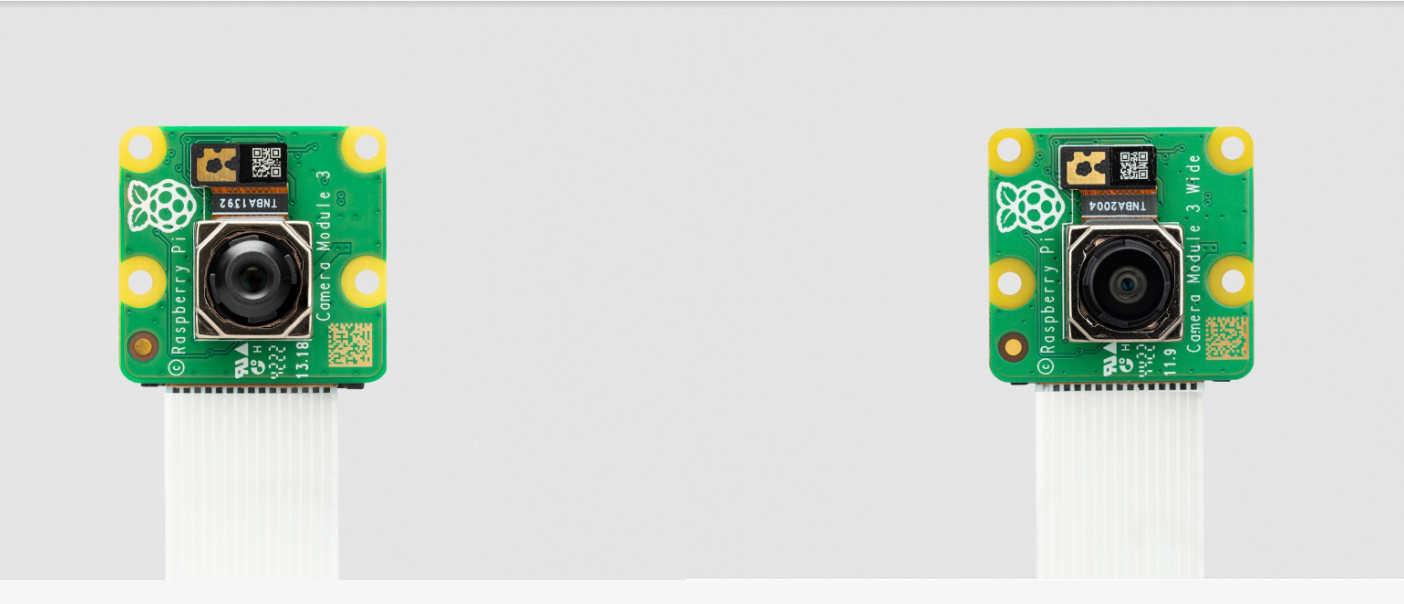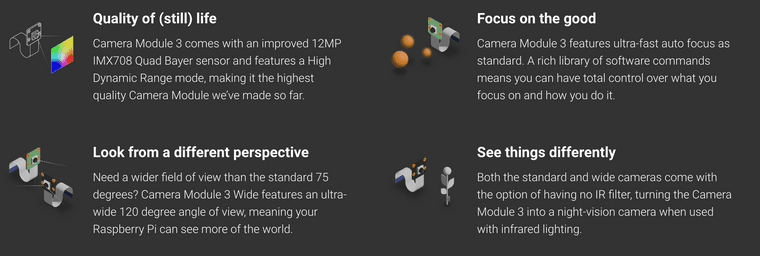The Raspberry Pi Pico
-
Unexpected product from Raspberry Pi, Raspberry Pi announcement brings new excitement. This is no different. It's as exciting as any other Raspberry Pi new product.
The Raspberry Pi Pico is an entirely new type of microcontroller from Raspberry Pi. Small, cheap and flexible - it’s great for learning to code with MicroPython!
Whether you’re looking to learn about the MicroPython programming language, take your first steps in physical computing or want to build a hardware project, the Raspberry Pi Pico – and its amazing community – will support you every step of the way.
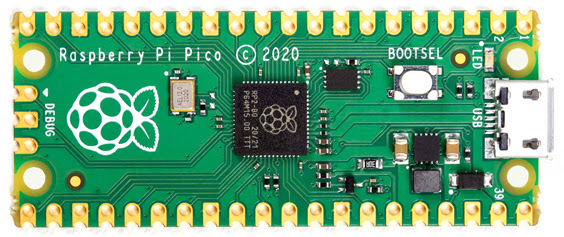
The Pico isn’t designed to replace the Raspberry Pi, which is a different class of device known as a single-board computer.
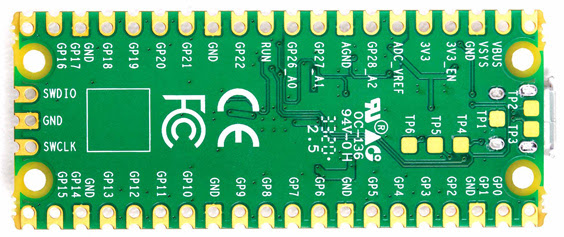
Whereas you might use your Raspberry Pi to play games, write stories and browse the web, your Raspberry Pi Pico is designed for physical computing projects where it can control familiar components such as LEDs, buttons, sensors, motors and even other microcontrollers.
The Pico can be quickly and easily programmed using MicroPython and C/C++ using popular editors such as Thonny. Getting started is also very easy thanks to the dedicated resources from Raspberry Pi.
You can program your Pico from your computer, a Raspberry Pi 4 or even another Raspberry Pi Pico!
Raspberry Pi Pico Specifications
The main chip on board is the 'RP2040' made by Raspberry Pi (their first in-house microcontroller chip!) and is a dual-core ARM Cortex M0+ processor, with a flexible clock running up to 133MHz.
-
RP2040 microcontroller chip designed by Raspberry Pi in the United Kingdom
-
Dual-core ARM Cortex M0+ processor, flexible clock running up to 133 MHz
-
264kB of SRAM, and 2MB of onboard Flash memory
-
Castellated module allows soldering directly to carrier boards
-
USB 1.1 Host and Device support
-
Low-power sleep and dormant modes
-
Drag & drop programming using mass storage over USB
-
26 multi-function GPIO pins
-
2×SPI, 2×I2C, 2×UART, 3×12-bit ADC, 16×controllable PWM channels
-
Real-time clock (RTC)
-
Temperature sensor
-
Accelerated floating-point libraries on-chip
-
8×Programmable IO (PIO) state machines for custom peripheral support
-
Dimensions: 51mm x 21mm (click for drawing)
Source: https://thepihut.com/collections/raspberry-pi-pico/products/raspberry-pi-pico
-
-
@salmanfaris Actually I can't believe this because of a perfect microcontroller in such a low cost. Definitely, this would be a great help for makers. And all specifications are really an eye-opener.
-
The Chip
RP2040 has a dual M0+ processor cores, DMA, internal memory and peripheral blocks connected via AHB/APB bus fabric.
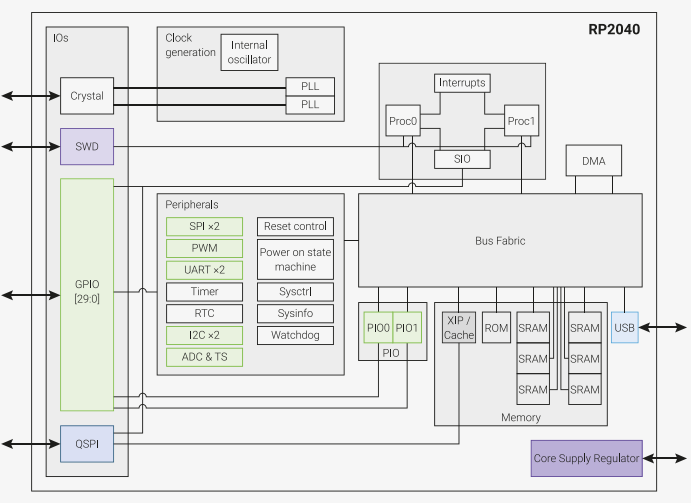
datasheet: https://datasheets.raspberrypi.org/rp2040/rp2040_datasheet.pdf
Official page: https://www.raspberrypi.org/products/raspberry-pi-pico/
-
Board with raspberry pi silicon:
-> Arduino Nano RP2040
-> Adafruit Feather RP2040
-> SparkFun Thing Plus - RP2040add if you found more!
-
@zainmuhammed RP2040 is not a perfect MCU nor it was designed to become one. It's still an ARM Cortex MCU. You can see many other similarly or even lower priced offerings from other manufacturers. For example, look at ESP8266 and ESP32. They don't use ARM core and thus save a lot on IP royalties (Intellectual Property for Silicon designs) and come with even more features.
But since it's from the house of Raspberry Pi, everybody knows that RP2040 is going to reach everywhere like wildfire. That kind of volume projection allowed them to cut the cost in the early stage of release. Because, cost of producing something totally depends on the scale of manufacturing.
Since RPi is from UK they must have also been able to make a better deal with ARM, which is also from UK.
-
@vishnumaiea I agree, they did an incredible job in the making of this product and, it looks like a perfect board for the maker/student/artist who wants to build project and learn stuff, they released all the docs, SDK, kit's even a book too.
I believe the perfect MCU depends on the application and price range so that actually works well in RP2040 latest for hobby maker I think, I not stating this is perfect MCU but it can make a big effect in maker market like Arduino UNO.
@vishnumaiea said in The Raspberry Pi Pico:
Since RPi is from UK they must have also been able to make a better deal with ARM, which is also from UK
Attaching Recent Eben Upton (CEO of Raspberry Pi) Tweet.


Tweet link: https://twitter.com/EbenUpton/status/1352335670015107074
-
@salmanfaris Yeah, just like features and price, long term support is also crucial in determining the efficacy of a microcontroller. What RPi has done with the new introduction of the MCU is close to perfection. Like you said, they had everything ready before the release and that how it should be. No other manufacturer has ever done this before. RPi understands their users and what they seek, as always. With that, they have been able to pull something off that no other manufacturer could.
RP2040 is not just going to be used in hobby spectrum, but also high volume commercial applications. And that's why I said before it is setting off a REVOLUTION. It's just a matter of time RP2040 supersedes ATmega328 in popularity. Microchip has to worry again! 🤭
-



